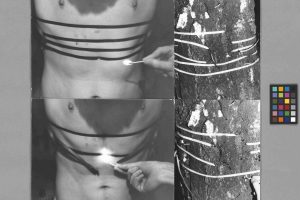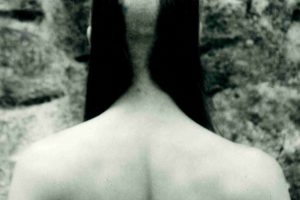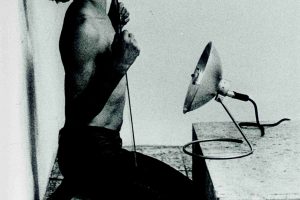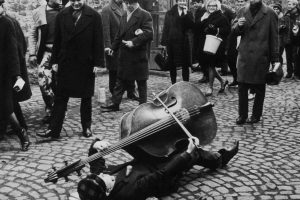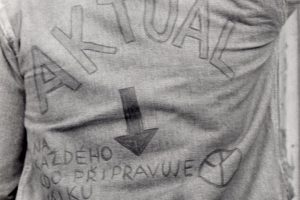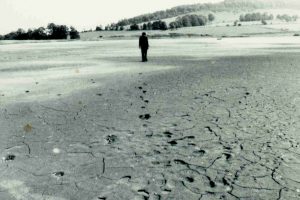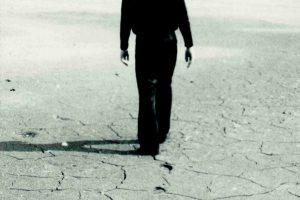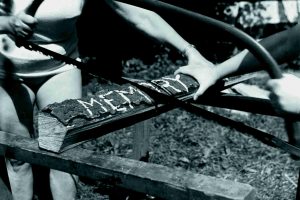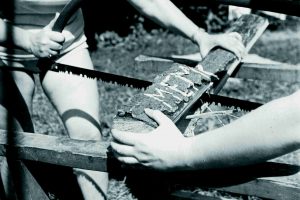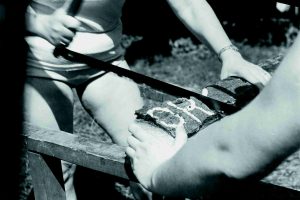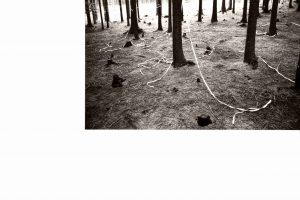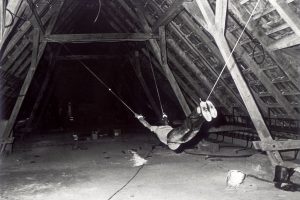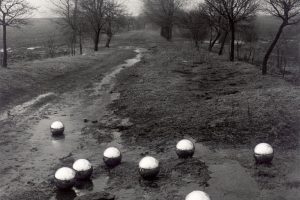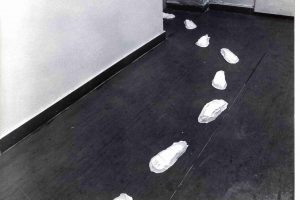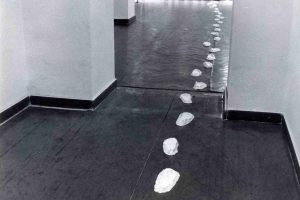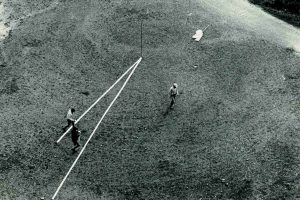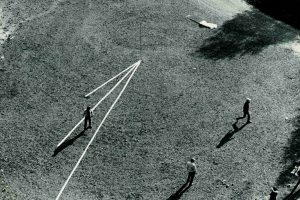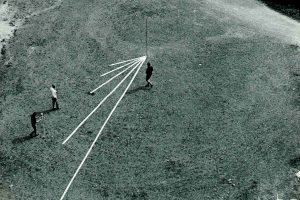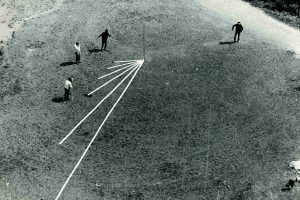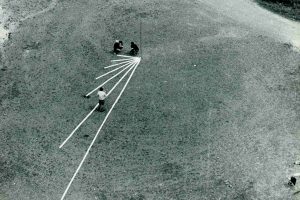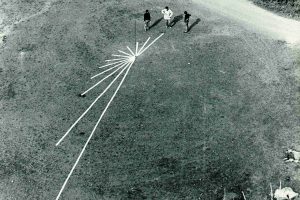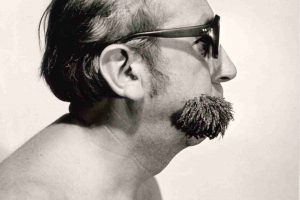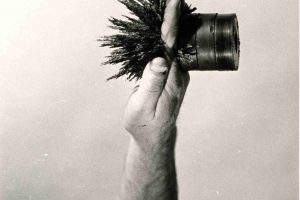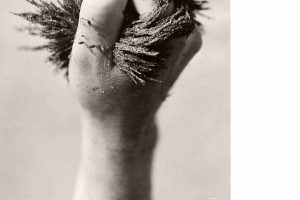Bridge Over Time. Contemporary Picture of the Past – book
The book is the result of the project, published in 2024. The research results presented in it will be a starting point for further research on the history of contemporary art in the V4 countries and other Middle European countries.
Bridge Over Time. Contemporary Picture of the Past (Download PDF)
Bridge Over Time. Contemporary Picture of the Past. Research and education project
General assumptions of the project, research tasks and course of research over the years 2021-2022-2023.
Assumptions
The main assumption of our long-term project is to collect existing knowledge about contemporary art (Neo-avantgarde art, Post-avantgarde Art, New Media, Performative Art, Object and Installation art) in a V4 countries not only to develop research on the art of the region as a whole, but also to take into account its local and national specificity. Thereby building on this basis a platform for the purpose of higher education on contemporary art in the region.
While this grant application focuses on contemporary art in the V4 countries, we contextualize our research and project outcomes within the broader regional framework of Central Europe. For the consolidation of results, an international network of exchange and cooperation will be established between institutions, scholars and educators working together in this field of study. Our present application is the first step in a long-term collaboration that’s outcome adds to the research Central European art and also serves as a basis for further research and elaboration of teaching material.
Goals
The goals of the project are twofold; they concern the collecting of factual knowledge and its contextual interpretation, and the creation of opportunities to teach the history of Central European art in a coherent and unified manner throughout the region. The aim is to collect knowledge dispersed in many centers conducting own research on the issues of art in the regions of Central Europe or on the art of particular countries. Existing archives, research centers and scholars working in various universities, they all conduct their own research and international exchange projects. However, we are lacking in coordination and a collection of the results of these studies at the international level. Recognition and completion of the factual database, basic description of the state of research results is the goal of the project.
Systematising knowledge would enable a comprehensive approach to the history of the art of the region, taking into account regional specificity. The research part also involves the further development of research methodologies and indicating the directions of contextual interpretation of the collected material. The factual elaboration allows the development of teaching methods, as the next step. Inclusion of the subject under the name ‘Contemporary Art in Central Europe’ (or Middle if the term obtains widespread recognition) to the didactic programs of higher education institutions constitutes a knowledge base for subsequent generations of researchers; enables studying in this field; developing an awareness of the history of art in the region, and capturing its continuity through the decades.
The specific time period of the research extends from the 1960s to the fall of the Iron Curtain, with references to later continuations in the art of the 90s and after the year 2000. The focus also takes into consideration the problems of continuation between Avantgarde and Neo-Avantgarde art in the region.
Besides studying conceptual and postconceptual tendencies and phenomena, the project has a special emphasis on workshops, centres in the region during the Cold War era, like those of textile art (Velem, Szombathely, Łódź). These workshops – besides offering the opportunity to create international professional relations on many occasions – presented the possibility to avoid cultural censorship by focusing on genres that were considered ‘secondary’ by the official cultural policy. This field has never been examined in an international context before thus the project offers an opportunity to conduct a comparative analysis on the topic as well as include it in the discourse of Central European Neo-avantgarde and Post-avantgarde art. Since these workshops were financed by the state, but usually organised by artists and artist associations, the research project touches upon the issue of artist-run initiatives and cultural organisations in the Socialist era as well.
Research methodology
Objectives
The general aim of our research within the project ‘Bridge Over Time’ is to create a wide panoramic view of contemporary art in the V4 countries and in the Central European region. A more detailed goal is first to collect basic art facts about contemporary art in our region of Europe (this does not necessarily mean the most well-known facts), and only then to provide their contextual interpretation, i.e. the socio-political background on which art was created.
Methodological assumptions
Art facts are now largely dispersed in publications on national art. It is necessary to develop a common method of art facts selection and building comparisons of these facts between the countries of the region.
- We should select the most radical artists, works and events, both in terms of the art itself and the context of creation. Because such events allow you to mark points in the history and work out a summary interpretation.
- Art facts should be linked to the institutional context, i.e. exhibitions, symposia, workshops, open-air events, etc., because it allows to describe the functional infrastructure of artistic production and the conditions in which art was created.
- A special focus should be placed on the description of the modernist / postmodern breakthrough, and the development of contextual narratives in the field of postmodern art. And among postmodern discourses, the sources and development of identity politics art play a key role in contemporary art.
- Although each participant of the project elaborates on the national art of his country, the descriptions and interpretations should indicate international relations (both between artists and institutions). In particular, the subject of the study should be relations within our four countries, but also with other neighboring countries throughout our region of Central Europe.
- The time scope of our research covers contemporary art, that is history from the 1960s. The natural end date is the political breakthrough of 1989/90. However, other time references obviously depend on the individual research plan. And despite the significance of the turning point in the fall of the Iron Curtain, individual research may point to ramifications in the field of art that extend beyond this date to recent times. postmodern art, identity politics art
Our work is to a large extent a reconstruction of the history of art from the perspective of time distance, this is how we build this ‘Bridge Over Time’.
Project phases
- A consortium will be set up to collect knowledge and identify knowledge gaps, and to highlight unexplored, unrecognized issues. During this phase, a detailed bibliography of existing research into the art of the region will be prepared.
- The joint work and meetings within the project will provide a comprehensive picture of the art of the V4 countries and Central Europe: we are planning at least four meetings during the project period, one at each partner institution, in addition to regular online meetings. A conference at the end of the project will be held in Gdańsk, which will open up to academics, researchers, curators, art critics and artists who will be invited by the project partners. The aim of the conference is to summarize the results. We propose the establishment of a permanent conference, a team of scientists, curators and artists, who will monitor, update and constantly evaluate new research and education results, supplementing the growing knowledge and improving research methodology and teaching methods, adapting it to new research achievements, including new publications.
- Each partner institution / gallery prepares a small exhibition / film screening in connection with the project, within 18 months of the project duration. These exhibitions will also be available online. The exhibitions provide visual materials, illustrations that should be included in the textbook, and support the curriculum.
- An editorial board will be appointed to prepare a handbook on the topic of “Contemporary Art in Central Europe.” The handbook will be prepared in paper and pdf versions, available online, to facilitate its use and wide dissemination. This handbook can serve as the core curriculum for a future university course that is the next step in our long-term project. The website created for the project will be a platform providing information on contemporary art, developing bibliography and curricula, as well as publishing articles and organizing discussions. The Visegrad Grant would facilitate further long-term collaboration between participating institutes and scientists, even after the end of the project period.
November – December 2021 – meetings online
*
Budapest
Curator: Kata Balazs; team: Róna Kopeczky,
January 14-February 18, 2022 – exhibition at acb Gallery / Attachment project space; February 4, 2022 joint research team meeting.
Space Marks / Térjelek
In recent years, much attention has been directed to the art experiments that took place at the Bonyhád Enamel Factory during the late sixties and early seventies. These activities, initiated by Kamill Major and later Ferenc Lantos, took shape in 1968 as the Architectural Enamel Art Camp with the participation of Gyula Pauer, Tihamér Gyarmathy and Oszkár Papp. From 1969 to 1972, members of the Pécs Workshop – which had formed from a group of Lantos’s students (Ferenc Ficzek, Károly Hopp-Halász, Károly Kismányoky, Sándor Pinczehelyi, Kálmán Szijártó, and initially Lajos Szelényi) – regularly attended the art camp in Bonyhád (then, from 1970 onwards, in Mecseknádasd). In 1970 and 1972, the list of participants, among others, came to also include such representatives of geometric abstract art as Imre Bak and János Fajó.
In interpreting the events that occurred at Bonyhád, significant insights have been gained not only from the shows and publications of the acb Gallery and its exhibition projects in cooperation with the Vasarely Museum and the Janus Pannonius Museum, but also from the exhibitions entitled Separate Ways – Karl-Heinz Adler and Hungarian Abstraction (Kiscelli Museum/Kassák Museum, 2017), and 1971– Parallel Nonsynchronism (Kiscelli Museum, 2018/19). By bringing to the fore the considerations and international aspects that emerged during the memorable “abstraction debate” of the 1960s, these exhibitions have helped outline the context in which linking fine arts with architecture and industry offered abstract art an alternative, and also – in the form of mural works of art – the opportunity to benefit from more permissive climate of cultural policy.
The research exhibition presented at acb Attachment – as the first stage of a research project supported by the Visegrád Fund – through an interview video created for the show, seeks to nuance the relationship between the Hungarian symposium movement (which began in 1968 and reached its heyday in the 1970s) and the art activities that took place at the Bonyhád Enamel Factory. At the same time, the exhibition is also connected to the history of how these activities at the Bonyhád Factory (relating not only to enamel art) appeared on the avantgarde platforms of the era, thereby outlining the intersection of these two domains.
The works on display are selected from the material – conceived mainly in the spirit of geometric abstraction – that members of the former Pécs Workshop (with the exception of Károly Hopp-Halász, who was serving in the military at the time) submitted in response to a call for works announced in 1971 by art historian László Beke under the title The Artwork = the Documentation of the Idea. Imagination/Idea, which is regarded as the first collection of Hungarian conceptual art, sheds light on some heterogeneous interpretations of the relationship between art and ideas, based on the works of the artists whom Beke sought out in the early seventies. In including enamel works and enamel designs tied to the activities in Bonyhád, the material submitted by the Pécs group – as pointed out by Róna Kopeczky, László Százados and Zsóka Leposa – introduced into this collection a kind of functional, but also dynamic, thinking about public space and the natural environment, based on considerations that were modernist but also urbanistic, as inspired by Vasarely’s work.
In addition to the variability and seriality inherent in enamel art, its categorisability as applied art also played a particularly important role in this respect. This point is evidenced not only by Lantos’s letter submitted in response to the call, but also by Sándor Pinczehelyi’s semiotics-inspired montages, which question the traditions of commemorative monument building. Ferenc Ficzek’s cube addresses the problem of creating and perceiving space, while also bearing traces of Gyula Pauler’s pseudo and Vasarely’s method built on illusory effects. The work, which was included in the Imagination/Idea material only in the form of a ‘draft,’ can also be brought in connection with this thought, while Ficzek’s imprints of manhole covers are clearly based on found objects from the urban environment.
The chain of thought that connects the initial planning stages of the artwork with experiments in form and medial variations, and, then, with the execution phase, can clearly be traced in the documents entered by Kálmán Szijártó and Károly Kismányoky, a selection of which is presented at the exhibition. The rhythm of their joint land art actions – which were closely related to the artists’ stay in Bonyhád, also bringing to the foreground the ties created between geometric forms and the natural environment – and the element of the paper ribbons woven through the trees and the landscape are also echoed in Kismányoky’s enamel art. Taken together, these reflect back the interconnections between the varied forms arising from the different motifs, genres, techniques, and conceptualisations of space.
The exhibition is complemented by the screening of an experimental student film shot in 1961 in the Sculpture Department of the Academy of Fine Arts in Warsaw by a recently discovered artist of Central European modernism: Polish designer and visual artist Krystian Burda (1935-2015). Burda’s oeuvre is linked in multiple ways to ideas formulated by Hungarian artists about public space, landscape interventions, process art, neo-constructivism, as well as works both realised and unrealised, in a space defined by the social and aesthetic intentions of the socialist industry. The film comprised part of Burda’s degree work – which, in its day, created quite a stir and then quickly became legendary – involving the design of a Chopin monument. The 10-kilometre-long monument envisioned by the artist, which he planned to erect along the road leading to the Polish composer’s house of birth, was to employ solutions that were unusual for the period in terms of both form and memory politics. The work – which, building on the sculptural and temporal effects created by the interplay between piano keys and landscape elements, was to be “activated” by the viewer’s movements – remained a modernist study of space, an idea.
Burda’s experimental film (camera work by Andrzej J. Wróblewski), originally used as a visual demonstration tool for presenting the concept of the yet unrealised artwork – in addition to a mockup of the monument, photos of the landscape surrounding the road, and a rotating relief (reminiscent of solutions seen in Yaacov Agam’s proto-op art sculptures) modelling the thought process behind the idea – became his degree thesis. This work, made during the era of de-Stalinisation or the ‘Polish Thaw’ with its increased permissiveness towards abstract art, in addition to showing close ties to Burda’s teacher, internationally renowned architect Oskar Hansen and the ‘open form’ concept he promoted, also attests to a strong connection not only to the traditions of Polish constructivism, but also to Vasarley’s art, which served as a source of major influence to the Pécs artists as well.
Burda’s work can be counted among those which paved the way for such events as the international symposium movement – which, called to life by Austrian artist Karl Prantl, also provided networking opportunities to artists living and working behind the Iron Curtain – as well as the conventions and exhibitions organised under the auspices of the so called Polish Plein Air network. Further examples include the Biennial of Spatial Forms in Elbląg, a large scale event that rethought the possibilities of public art from the perspective of the constructivist traditions (the first of which, held in 1965, was also attended by Tihamér Gyarmathy), the Puławy Symposium (1966), which – in the spirit of the originally propagandistic linking of art, industry and science – took place at the Azoty Chemical Plant, and the Wrocław’70 Symposium.
Similarly to the situation in Hungary, the organisation of these factory-related conventions were made possible by the political agenda which, in aiming to bring representatives of the fine arts and socialist industry closer together, contributed to the reshaping of citiscapes after the war, while also creating opportunities for progressive tendencies. Burda did not participate in these events, although he later worked as an industrial designer himself, bringing his systematic, rational and modernist approach to design. For over thirty years, he worked as a designer of household articles, enamel utensils and objects, murals, and interiors at the Rybnik Ironworks, while also producing his autonomous works, using steel and enamel to create non-figurative panel paintings, reliefs and small sculptures in his workshop. From the early 1970s, he designed numerous enamel murals throughout Silesia, Poland and the former Czechoslovakia, including the facade of the now destroyed Diamant department store (Wodzisław Śląski) – a work that utilized the decorative and variational possibilities of enamel art.
Exhibiting artists: Imre Bak, Krystian Burda, Ferenc Ficzek, Károly Hopp-Halász, Károly Kismányoky, Sándor Pinczehelyi, Kálmán Szijártó.
Link to the exhibition:
https://acbgaleria.hu/exhibitions/terjelek
We owe our thanks to Imre Bak, Sándor Pinczehelyi, László Százados, Fundacja Polskiej Sztuki Nowoczesnej, Galeria Sztuki Współczesnej ̶ BWA Katowice, Małgorzata Kaźmierczak, Iwona Demko, Karina Dzieweczyńska (Centrum Sztuki Galeria EL, Elbląg) and Bernadeta Stano for their help.
The project is co-funded by the governments of the Czech Republic, Hungary, Poland and Slovakia through a grant from the International Visegrád Fund. The Fund’s mission is to promote sustainable regional cooperation in Central Europe.
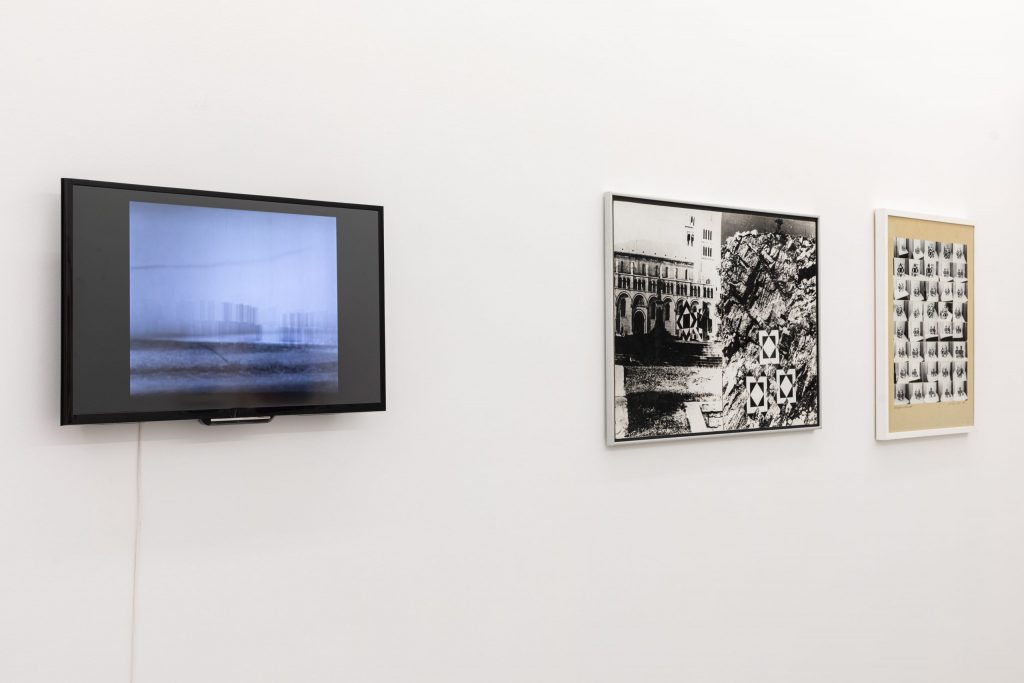
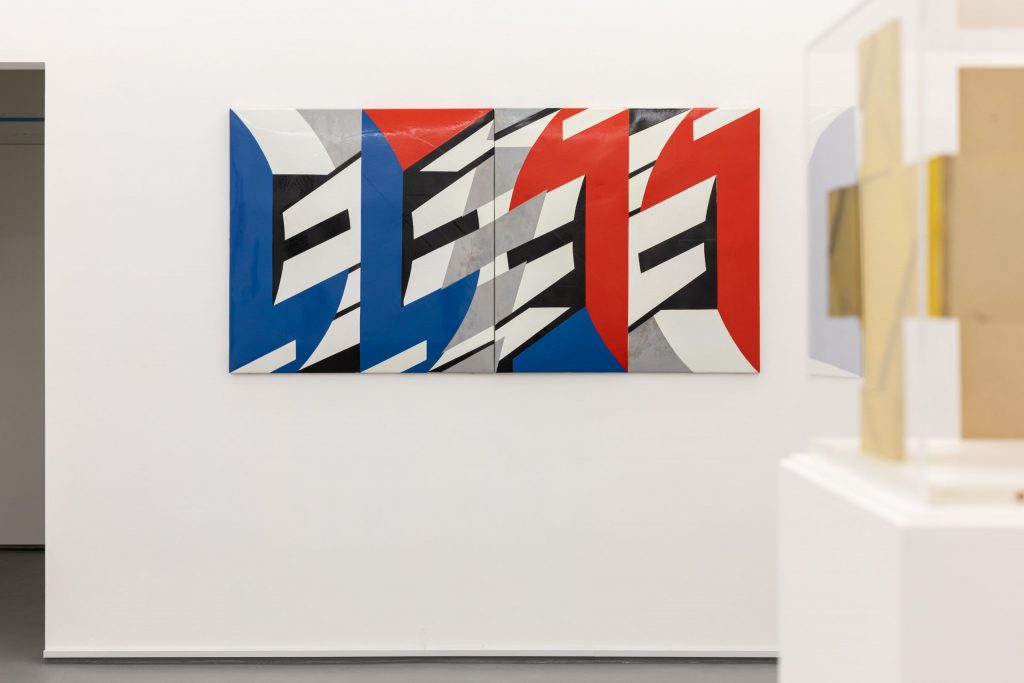
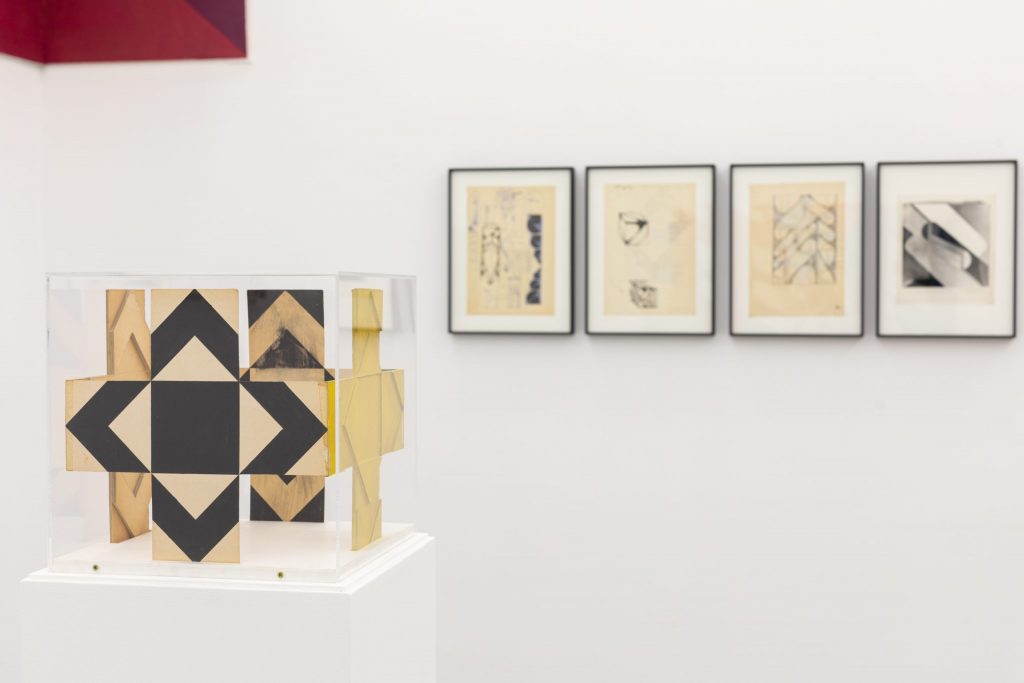
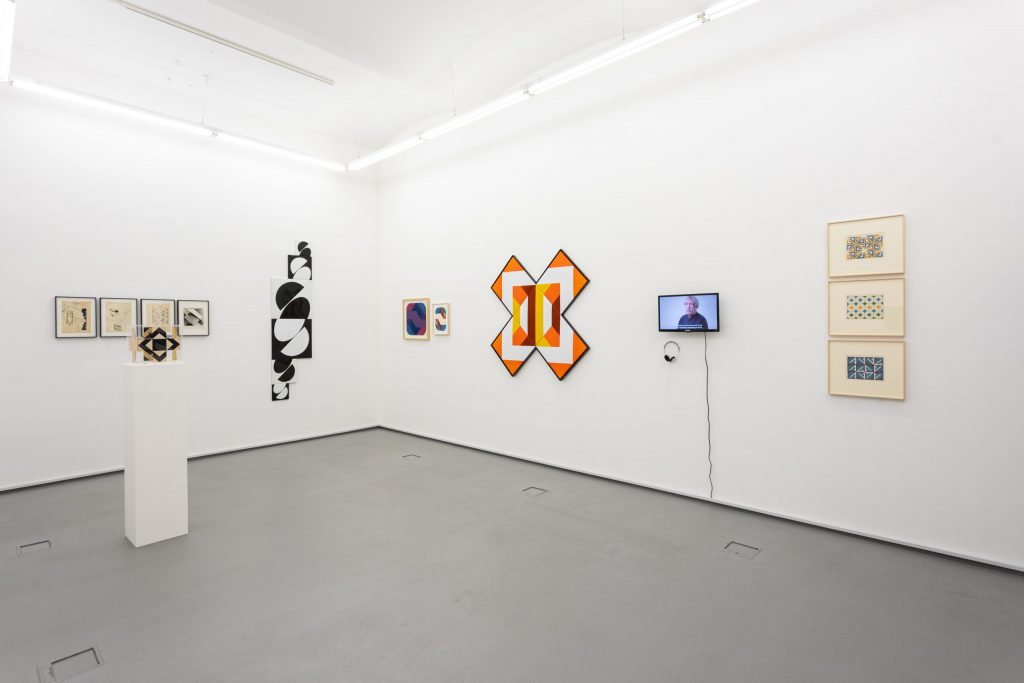
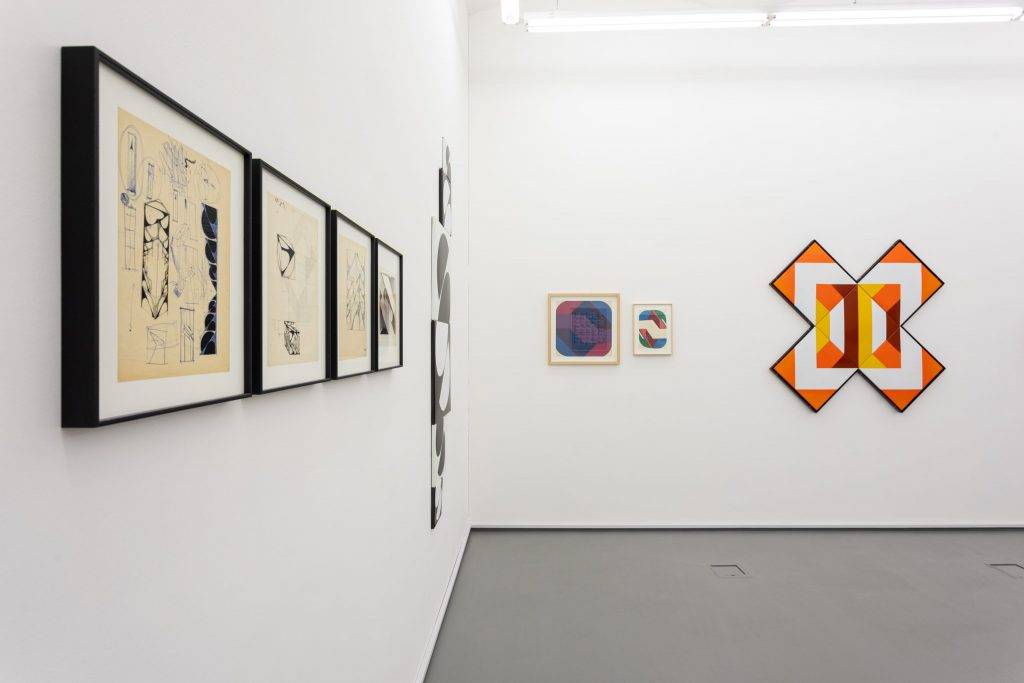
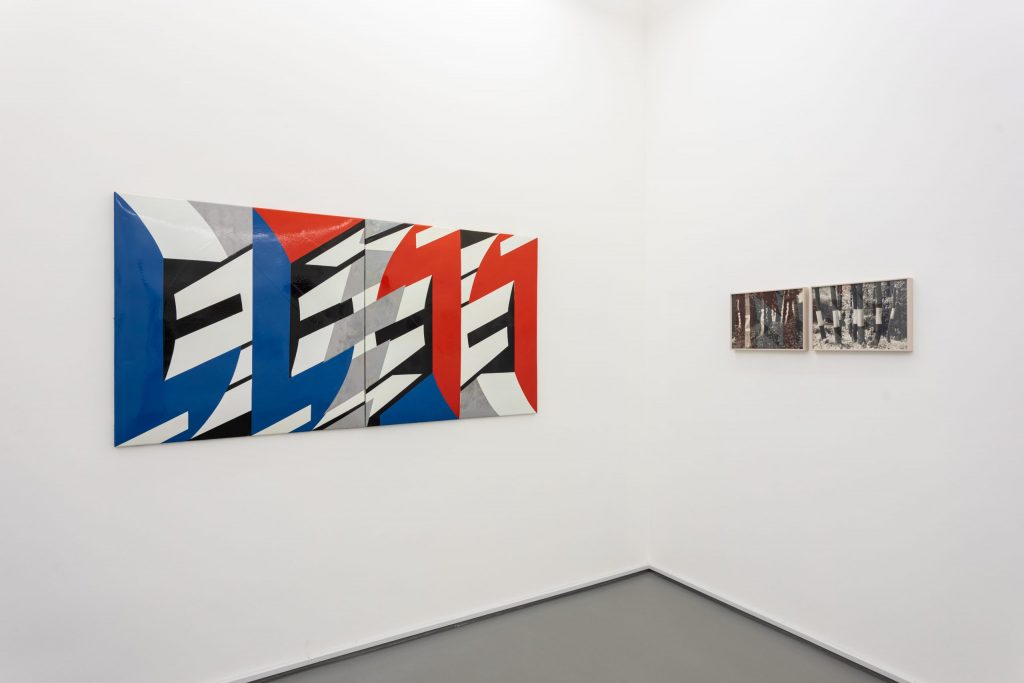
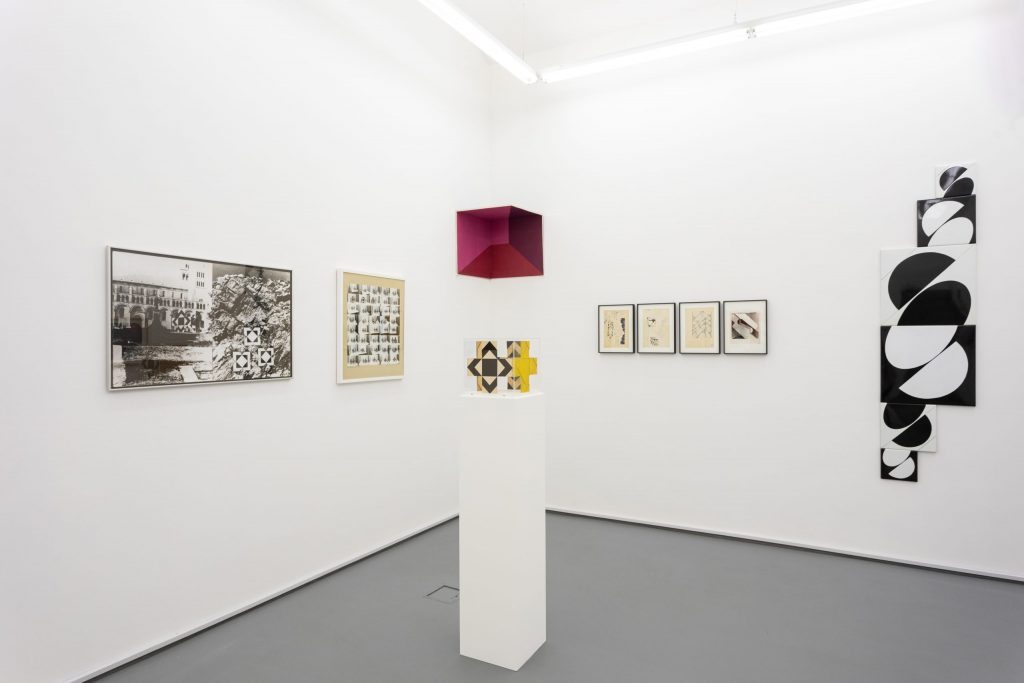
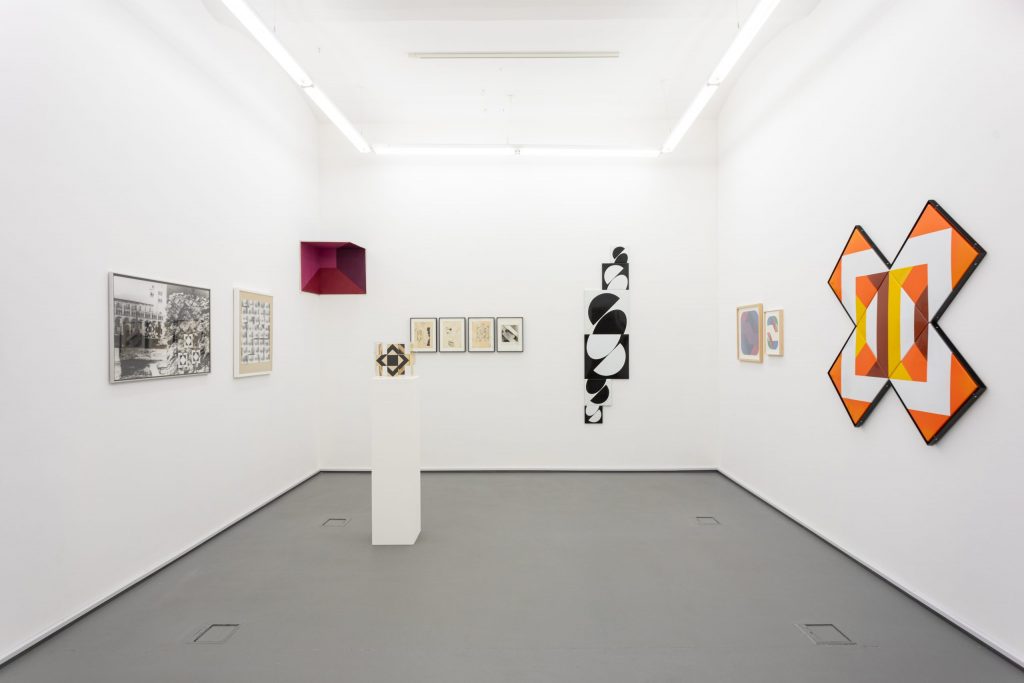
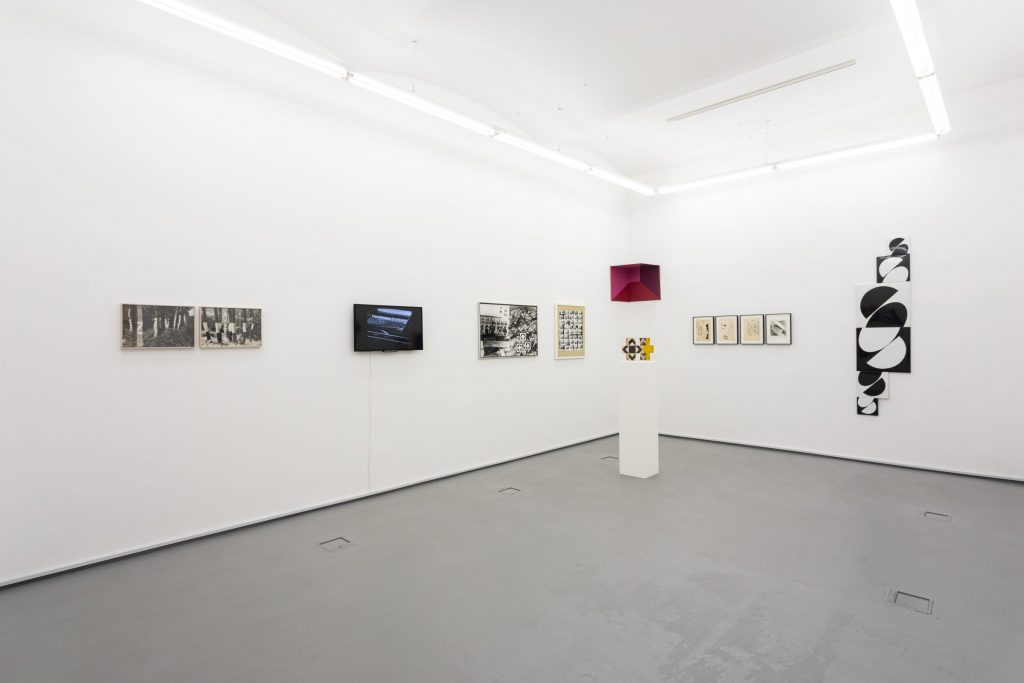
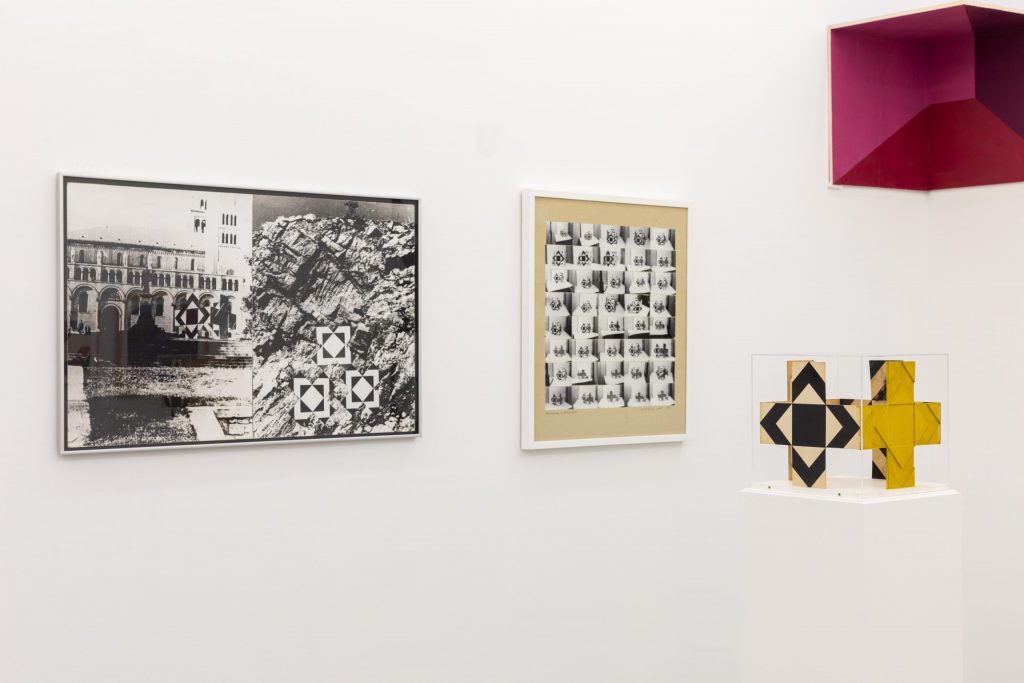
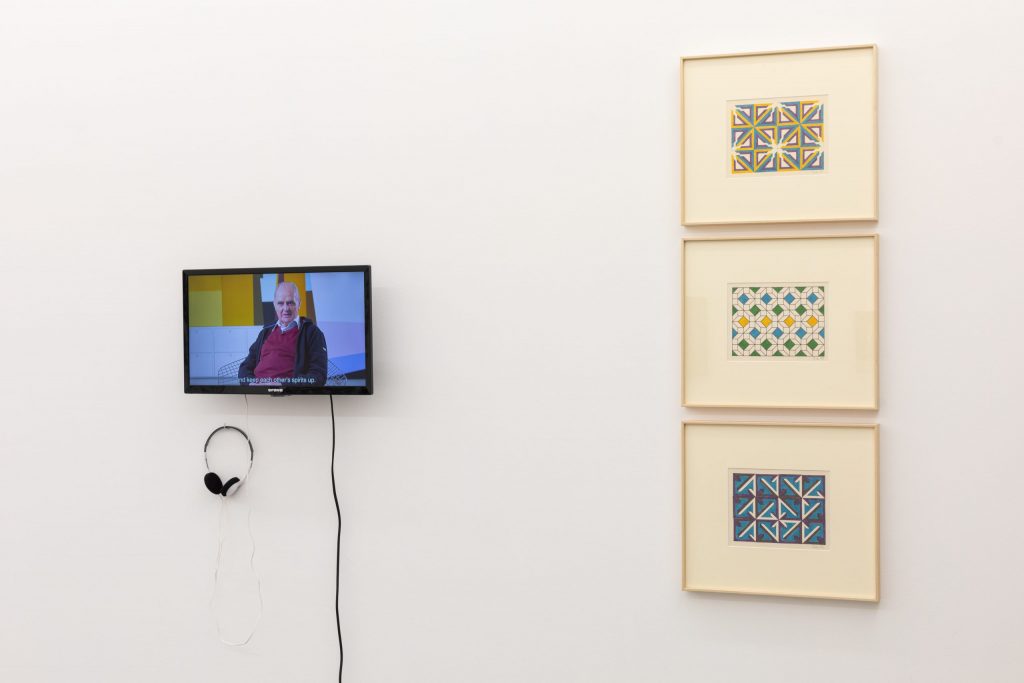
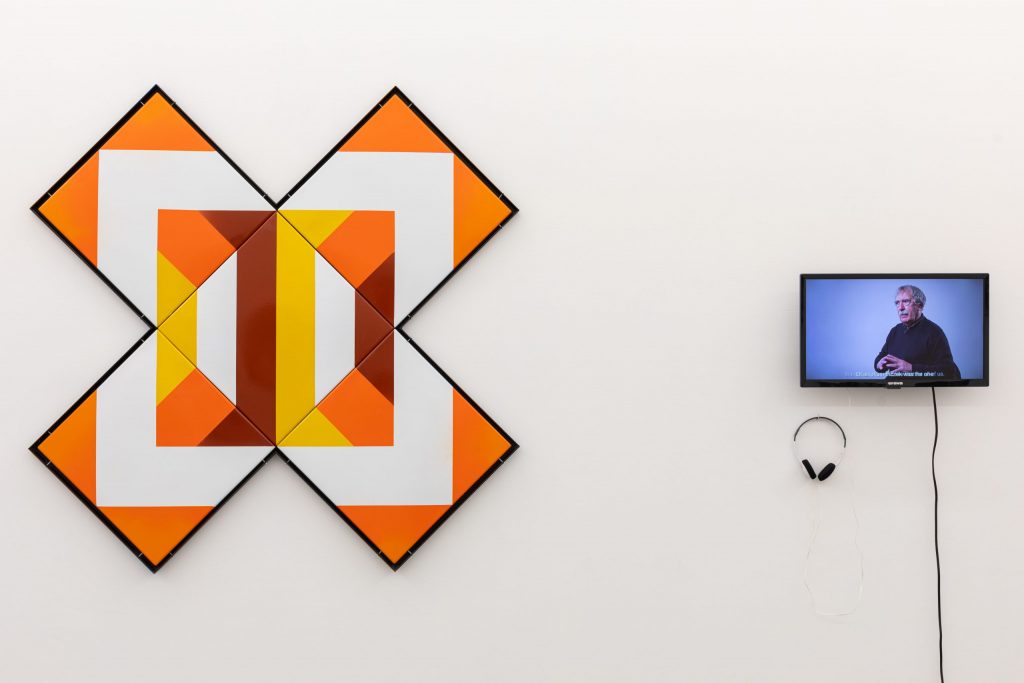
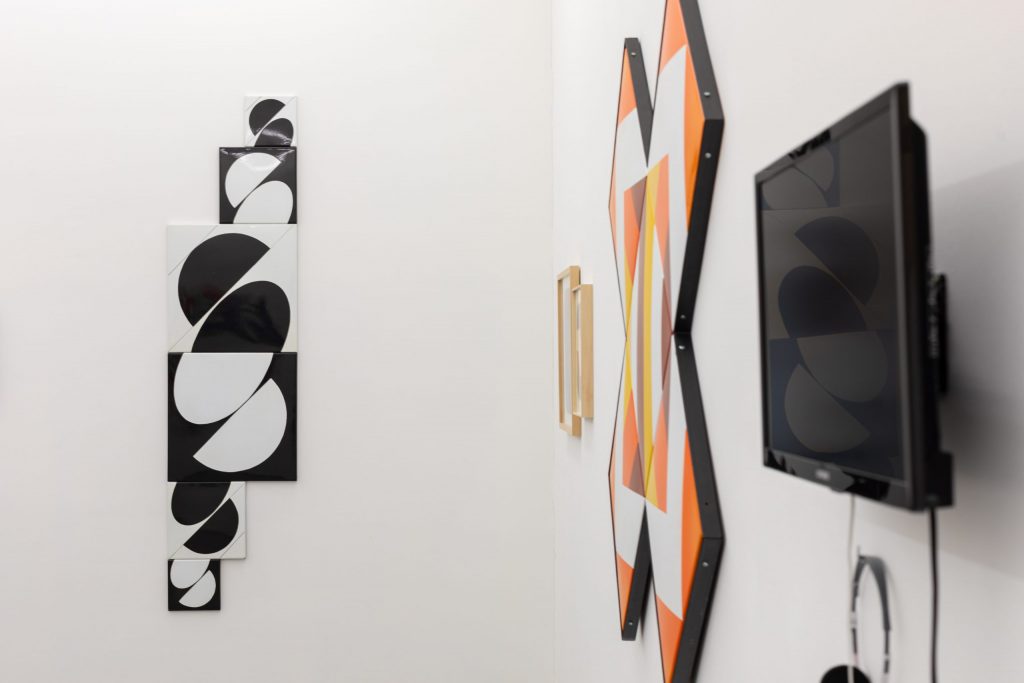
*
Documents of the Symposium Movement in Hungary (research field assumptions)
The Budapest research team’s aim is to conduct research on the transregional aspects of the role of workshops, art camps and plein-airs organised between the 1960s and 1989 in the V4 countries. If we consider the infrastructure that could be utilized by the Hungarian non-official art scene, there are two important directions: the first is the network of culture houses, the other is the network of art camps, workshops and plein-airs.
The so-called symposia movement, which started in 1967, is considered an important platform of experimentation in Hungary, but fundamental research is missing regarding its institutional background, its connections with the socialist industry and the chronological reconstruction of events and participants. It also lacks an analysis as a means to international networking and information exchange between participants in the second public sphere in Central Europe and beyond. We aim to conduct research mainly on the fields of textile/fibre art, enamel and ceramics, also considering the role of the Villány (sculpture) and Nagyatád (wood sculpture) art camps, concerning their role in neoavantgarde experimentation. We conduct a comparative analysis regarding the role of these events in the international (especially V4) context regarding the institutional background and artistic outcomes.
Textile is an extremely important field in this argument as it became a noteworthy area for neoavantgarde art at the periphery of political attention, since, according to the consensus, ideological and bureaucratical control was less strict in regards to applied arts than fine arts and textile art was practiced mainly by female artists in the mostly male-dominated official – and even non-official – art scene. Researchers and practitioners agree that this field’s importance is exceptional regarding the evolution of applied arts and artistic experimentation, especially its relation to conceptual art, but it has never been studied in the international, especially Central-European context, while enforcing criteria that focus on references deriving from fine arts. Our research includes a case study on the tworegional centers of textile/fibre art, Łódź and Szombathely: the exploration of the political, economic and industrial circumstances that brought into being the International Triennial of Tapestry in Łódź (1972), the Wall and Spatial Textile Biennale (1970), the Industrial Textile Biennale (1973) as well as the International Minitextile Biennale (1975/6) and the Velem Textile Art Symposium (1975-1983) operating under the auspices of the Museum in Szombathely. Besides the field of textile/fibre art, we conduct a study on experimental ceramics (Siklós International Symposium), enamel (i.e. the experiments conducted at the Bonyhád Enamel Factory and its Central-European counterparts) and its references regarding architecture and mural art, but we include autonomous fields of fine art like the Villány sculpture symposium and the Nagyatád wood sculpture symposium as well.
Our research plan promises new results regarding the history of non-official art in Hungary and the region and puts personal and professional connections in the Visegrád countries in a new light as well. Our plan requires considerable time spent at local libraries and databases, especially the archives of the Institute of Public Education, or the archives of the Szombathely Gallery in Szombathely. The exhibition organized at acb Gallery, Budapest focuses on the outcomes of the research regarding the symposia movement: it will include documents and artworks and explore the above-mentioned aspects of the movement.
Researchers: Kata Balázs, acbResearchLab; dr Róna Kopeczky, acbResearchLab; Zsóka Leposa, art historian; László Százados, Hungarian National Gallery. The research team is collaborating with the Moholy-Nagy University of Art and Design, Budapest. As the project has a significant educational scope, we include 3 students from the Art and Design Theory Program of MOME as exhibition and research assistants.
Opava
Curator: Štěpánka Bieleszová; team: Michal Koleček, Jana Orlová
opening March 3, 2022 – exhibition and joint research team meeting in Opava and Olomouc
KUPÉ Gallery, Cultural and Artistic Space, Opava / Muzeum moderního umění, Olomouc
DEMONSTRATION FOR ALL SENSES
Reflection of social Climate in Czech conceptual Photography
Revolt was a basic motif of artistic expression in the 1960s and today it is generally referred to as Action Art. In their protests against the commercialization of art, artists left galleries and performed various actions in the streets, on alternative premises and in the countryside. In most cases, photo documentation is all that remains of such transient actions. Olomouc Museum of art boast the largest collection of Performance Art in the Czech Republic. The exhibition Immediate Temples will present selected works from this and private collections.
The popularity of pop art is behind the emergence of an international stream of artistic activities outside the official gallery. It iniciated the art market in the United States in the 1960s. Some artists were disgusted with this development and wanted the art to return to its original function. That’s why they went out of the galleries, into alternative spaces, into the landscape.
At the time of its creation, Action Art also found a response in what was then Czechoslovakia. His pioneer at the time was Milan Knížák. His happening A Walk in the New World (Demonstration for All Senses) was created in 1964. As a member of the Fluxus group, he lived in the United States from 1968 to 1970, and in addition to lecturing at universities, he also held several events there. He then prepared a number of events in Czechoslovakia. In addition to the reaction to the commercialization of art, however, action and conceptual art also responded to the social atmosphere in the communist country in the 1960s and 1980s. Many activities had a political subtext. Many authors also had a problem with the political apparatus.
Methodology:
- qualitative research of the collection fund (Olomouc Museum of Art);
- collection and summary of information from published texts and images (search, annotations, keywords);
- field research and preparation of an exhibition collection of works (private collections, artists’ studios);
- preparation of a text for an exhibition in the cultural and social context of the 60s – 80s.
Artists:
Karel Adamus (*1943)
Vladimír Ambroz (*1952)
Eugen Brikcius (*1942)
Hugo Demartini (1931–2010)
Milena Dopitová (*1963)
Miroslav Zeman (*1972)
Miloslav Sonny Halas (1946–2008)
Olaf Hanel (*1943)
Vladimír Havlík (*1959)
Dalibor Chatrný (1925–2012)
Ivan Kafka (*1952)
Svatopluk Klimeš (*1944)
Barbora Klímová (*1977)
Lenka Klodová (*1969)
Eva Kmentová (1928–1980)
Milan Knížák (*1940)
Jiří Kovanda (*1953)
František Kowolowski (*1967)
Milan Kryštůfek (*1978)
Karel Miler (*1940)
Jan Mlčoch (*1953)
Marian Palla (*1953)
Dita Pepe (*1973)
Michal Pěchouček (*1973)
Tomáš Ruller (*1957)
Zorka Ságlová (1942–2003)
Alexandr Skalický St. (*1932)
Václav Stratil (*1950)
Miloš Šejn (*1947)
Petr Štembera (*1945)
Jiří Toman (1924–1972)
Jiří Valoch (*1946)
Jan Wojnar (1944–2014)
Nové Zámky
Curator: Helena Markusková; team: Daniela Carna, Vladimíra Büngerová, Jan Kralovič
September 8.- October 29, 2022. Meeting of the research group 21.09.2022
Ernest Zmeták Art Gallery in Nové Zámky
PERMANENT ALTERNATIVES
Exhibition and meeting of the research group in Nové Zámky. Within the project in Slovakia, we will focus on the alternative tendencies, dematerialized forms of art, the manifestations of conceptual, neoconceptual and intermedia art in Slovakia from the 1960s with overlaps to the present. We will summarize the current view of the individual stages with an emphasis on key events, personalities, localities, main and marginal topics. At the same time, we will focus on connections of Czech-Slovak, Slovak-Hungarian art, and their responses in Slovak art, which have not yet been researched. The result will be a new open reading of history in broader contexts. Studies in the publication: “Permanent Alternatives” (working title) follow the time-thematic axis. They include:
a) genesis of action and conceptual art, experimental music and visual poetry (1963-1972), activities of key actors (A.Mlynárčik, J.Koller, S.Filko, P.Bartoš, M.Adamčiak, J.Želibská and others), overview of important presentations on the official stage (International Biennale DANUVIUS, 1968, Bratislava, Polymúzický prostor, 1970, Piešťany) and non-gallery spaces (I. open studio, 1970, Bratislava), events outside the center (J. Bartusz, Košice), establishing foreign contacts and cooperation (Meeting of Czechoslovak and Hungarian Artists, Balatonboglár, 1972).
b) function of the alternative scene (1972-1985) during normalization, unofficial and independent activities: creative meetings in studios, apartments, public and non-gallery spaces, outdoor events, album publishing. It will provide an overview of art experiments, ecological, cosmological utopian projects (R.Sikora, S.Filko), utopian architectural projects (A.Mlynárčik, VAL, J.Jankovič), psychological and sociological research (J.Budaj, Ľ.Durček, Dočasná spoločnosť intenzívneho prežívania), research focused on the dialogue of science and art (J.Jankovič, J.Bartusz), unique experiments with zoomedio (P.Bartoš), meditative events in nature (M.Kern). It will present thematically focused creative meetings (Bratislava Artifact Shift Championships, 1979-1986), outdoor events (Terén 1982-1984), representatives of the international mail art network.
c) the period of perestroika (1985-1989) meant a partial easing of bans and restrictions, the onset of the young generation, a revival of activiti es in the region. The Štúdió Erté group (1987-2007) organized e-mail art events and international festivals of experimental art (1988-2018, since 1992 Transart Communication) in Nové Zámky. Young neo-expressive artists realized symposia in nature (Exterior I.-IV., 1987-1989). The Syzygy Group (1988-1992) developed an intergenerational dialogue. The exhibition Nový slovenský obraz (1988) presented expanded forms of traditional painting media, the semi-public exhibition Basement ́89, presented objects and site-specific installations in intergenerational dialogue, connecting authors entering the scene in the 60’s and 70’s with the younger generation of artists – from action art until a temporary artistic artifact. Several artists and art school students were directly involved in the revolutionary events of November 1989.
d) turnover time (1990-1998) – the first post-revolutionary years were marked by reforms of the cultural and institutional spheres. The arrival of artists of the alternative and independent scene as teachers at art colleges triggered a wave of neo-conceptual art. Groups of artists with similar opinions (Nová vážnosť, Skupina A–R, Čenkovej deti) were formed. Renewal of international contacts and cooperation. The division of Czechoslovakia (1992) and the rise of an authoritarian government, preferring conservative national art in cultural policy (1992-1998), slowed down a promising start. Progressive artists reacted to this situation, a generation of new media artists (R.Ondák, B.Ondreička, C.Blažo, D.Lehocká) arrived. Significant individualities were categorized by gender themes (J.Želibská, I.Németh, A.Daučíková). Remarkable exhibitions and events took place outside the Bratislava center (Sympózium Laboratórium, Prešov, 1992, Vysoké Tatry, 1994, Košice, 1996; sympózium preMostenie, Štúrovo-Esztergom, 1997; exhibitions Umenie aury, 1995–1996, Pamäť miesta 1997–2000, GJK Trnava; Fyzický/ Mentálny, 1995, Paradigmažena, 1996, PGU, Žilina).
e) the turn and beginnings of the millennium (1999-2010) – meant integration into European structures, in the art of reflection on the past, opening taboo topics, public and private confrontations, social criticism, reactions to nationalism and discrimination, criticism of consumerism, institutional and media criticism. Authors preferring gender themes (P.Fichta-Čierna, L. Tkáčová, A.Mona Chisa), social-critical artists (A.Čierny, R.Fajnor, S.Mikyta, M.Kvetan, M.Moravčík, M.Piaček) and solitaires (S.Masár, T.Džadoň, Š.Papčo).
f) media period (2010-2020) – raised the problems of globalization, the increase in violence, the threat of international terrorism, the problem of migration and the crisis of climate change, environmental issues, criticism of capitalism, consumer and conformist life. The emergence of engaged and activist contributions, independent centers, was intensified by criticism of the institutional gallery sphere, from the conservatism of presentation – to the power position of institutions and the art market (R.Fajnor, J.Kapelová, M.Galbavý, Kassaboys). The beginnings were marked by the struggle for the establishment of the Kunsthalle in Bratislava and the hopes placed in the reconstruction of the SNG. Within the regional gallery network, the influence and importance of some institutions (PGU Žilina, SG Banská Bystrica, NG Nitra, VSG Košice, GUEZ Nové Zámky) increased. Private galleries, new independent exhibition spaces and centers with a defined program were established (Krokus, Gallery 19, SODA, Zahorian Gallery in Bratislava, Banská STANICA in Banská Štiavnica, New Synagogue in Žilina).
The art scene retains generational and ideological diversity, independence and openness by developing and establishing collaborations. The forthcoming studies are characterized by the intention to provide a new reading of history, based on updating, summarizing and reflecting on knowledge, pointing out the resonances of Czech-Slovak and Slovak-Hungarian relations, as well as the broader contexts of Slovak art. The studies will provide another perspective, an alternative narrative of history, with reference to analogies and specifics of art within the countries of Central Europe. The benefit of the studies will be the enrichment of knowledge and contextual reading of the history of fine arts through texts that will be structured by references (texts in texts, extended notes, diversions) approaching individual phenomena through selected works, art forms, artists, exhibitions and themes.
Exhibition: Permanent Alternatives (working title) in the Ernest Zmeták Art Gallery in Nové Zámky. With its concept, the exhibition loosely follows the thematic-chronological axis of studies in the handbook. It will provide a brief overview of alternative tendencies, manifestations of conceptual, neoconceptual and intermedia art in Slovakia from the mid-60s to the present. It will present works, fragments of works, relics, or later author’s reconstructions, photographic and archive documentation, video recordings, sound recordings and text descriptions of events, as well as various other documents (invitations, catalogs, project proposals, etc.).
Project participants:
Vladimíra Büngerová, author of the studies Gábor Hushegyi, author of the studies Helena Markusková, curator of the exhibition.
Gdansk
October 28-30, 2022
Curator: Agnieszka Kulazinska
Film screening.
Laznia Centre for Contemporary Art, Gdańsk
Conference. Moderator: Łukasz Guzek
Art Geography of Central Europe: landmarks, networks, sources
At the end of the project the conference in Gdańsk will be organized where the results of the research will be presented and discussed. Speakers from all V4 countries not involved in the project will be invited.
The conference aims to summarize the research carried out under the project. The conference is of a working nature. During its duration, the final results of the project will be developed.
The conference has two goals. First, during the conference, the entire content of the handbook will be established. And the final discussion after the presentation of the chapters prepared by the national teams will help determine the final thematic scope of the book. Research teams become editorial teams. The editorial team prepares an electronic and printed version of the textbook. The second objective is to define the scope of the curriculum for teaching the subject “Contemporary Art in Central Europe”. The curriculum is a proposal for universities wishing to conduct such a lecture course as part of their educational offer. The curriculum will be included in the textbook as post-conference materials.
Handbook launch
Gdansk
Laznia Center for Contemporary Art.
last updated June 2022
Colophon
Conceived by: Łukasz Guzek, associate professor at the Academy of Fine Arts in Gdańsk, Sztuka i Dokumentacija/ Art and Documentation journal editor-in-chief (chief curator of the project). Developed in collaboration with: Agnieszka Kulazinska, curator at Laznia Contemporary Art Center (executive curotor of the project); Kata Balazs, art historian at acb ResearchLab, Budapest (regional curator of the project); Helena Markusková, curator and director of the Ernest Zmeták Art Gallery in Nové Zámky (regional curator of the project); Štěpánka Bieleszová, curator of The Kupe Gallery, Opava and curator of collection of Photography in MUO / OMA (Muzeum Umění Olomouc / Olomouc Museum of Art) in Olomouc (regional curator of the project).

